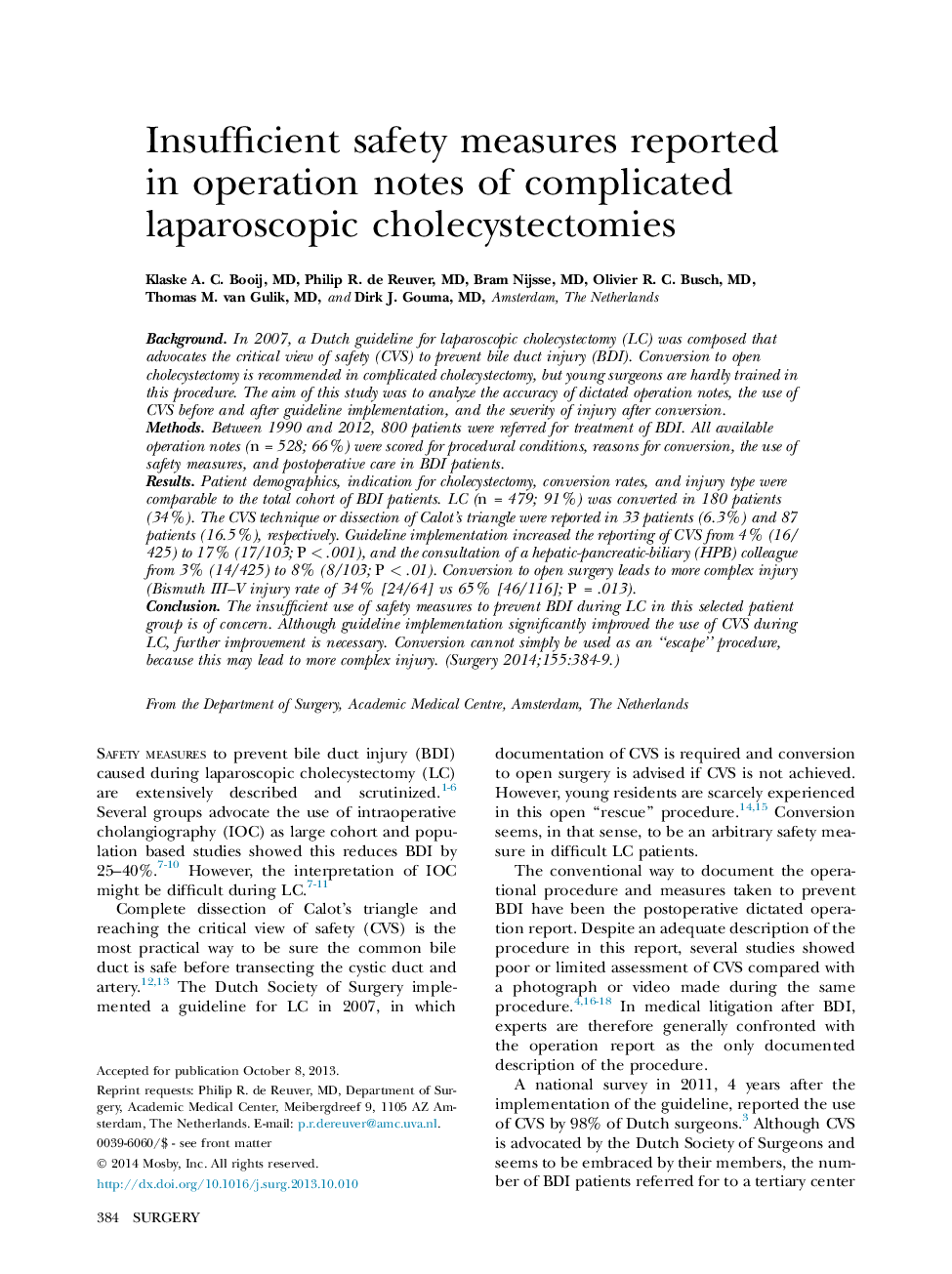| Article ID | Journal | Published Year | Pages | File Type |
|---|---|---|---|---|
| 6255559 | Surgery | 2014 | 6 Pages |
BackgroundIn 2007, a Dutch guideline for laparoscopic cholecystectomy (LC) was composed that advocates the critical view of safety (CVS) to prevent bile duct injury (BDI). Conversion to open cholecystectomy is recommended in complicated cholecystectomy, but young surgeons are hardly trained in this procedure. The aim of this study was to analyze the accuracy of dictated operation notes, the use of CVS before and after guideline implementation, and the severity of injury after conversion.MethodsBetween 1990 and 2012, 800 patients were referred for treatment of BDI. All available operation notes (n = 528; 66%) were scored for procedural conditions, reasons for conversion, the use of safety measures, and postoperative care in BDI patients.ResultsPatient demographics, indication for cholecystectomy, conversion rates, and injury type were comparable to the total cohort of BDI patients. LC (n = 479; 91%) was converted in 180 patients (34%). The CVS technique or dissection of Calot's triangle were reported in 33 patients (6.3%) and 87 patients (16.5%), respectively. Guideline implementation increased the reporting of CVS from 4% (16/425) to 17% (17/103; P < .001), and the consultation of a hepatic-pancreatic-biliary (HPB) colleague from 3% (14/425) to 8% (8/103; P < .01). Conversion to open surgery leads to more complex injury (Bismuth III-V injury rate of 34% [24/64] vs 65% [46/116]; P = .013).ConclusionThe insufficient use of safety measures to prevent BDI during LC in this selected patient group is of concern. Although guideline implementation significantly improved the use of CVS during LC, further improvement is necessary. Conversion cannot simply be used as an “escape” procedure, because this may lead to more complex injury.
